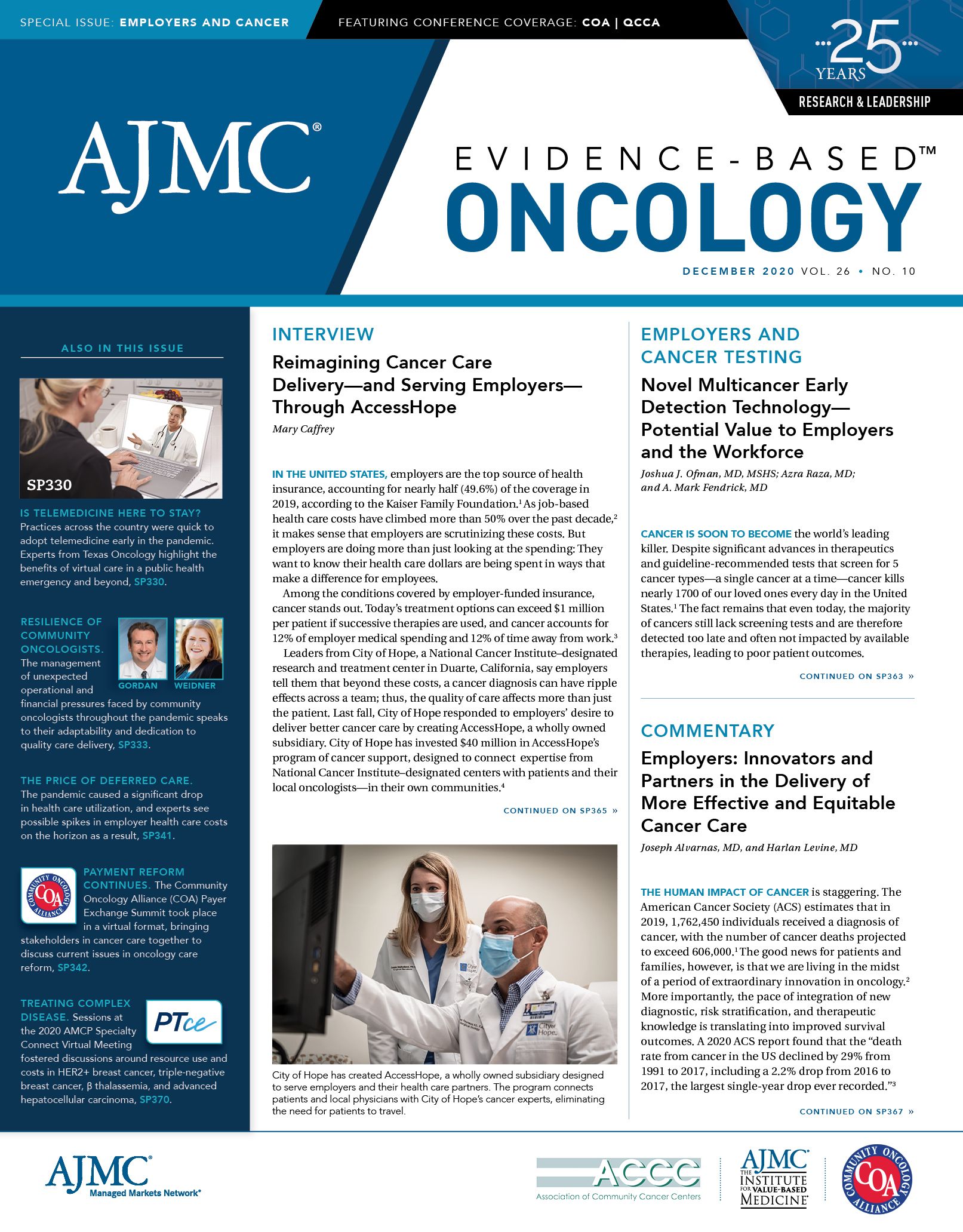Publication
Article
Evidence-Based Oncology
Propelled by Targeted Therapies, NSCLC Mortality Fell Between 2013 to 2016
Author(s):
Nearly 10,000 deaths from non–small-cell lung cancer (NSCLC) were likely delayed between 2014 to 2016, the researchers calculated.
Driven by treatment advances and a reduction in incidence, US population-level mortality from non–small-cell lung cancer (NSCLC) fell sharply from 2013 to 2016, according to researchers.
That time period was also marked by improved survival, and the researchers credited the increasing use of targeted therapies as they were approved and became part of clinical practice.
Nearly 10,000 deaths from NSCLC were likely delayed between 2014 to 2016, the researchers calculated.
However, while deaths from small cell lung cancer (SCLC) also fell, they fell only because of a reduction in incidence, reflecting of a lack of treatment breakthroughs for this subtype of lung cancer, the researchers wrote in The New England Journal of Medicine. There was no improvement in survival in SCLC, they said.
The authors used the Surveillance, Epidemiology, and End Results (SEER) database, which links death records to incident cancer cases, in order to determine mortality trends by subtype, because not as much is known in this area. Knowledge is greater when looking at incidence trend by subtype, they wrote.
But having both types of information is key.
“It is important to assess trends in mortality from lung cancer according to subtype because the potential adoption of lung-cancer screening coupled with reductions in smoking are likely to influence future mortality from lung cancer differentially according to histologic subtype,” the authors wrote.
NSCLC accounts for 76% of all US lung cancer cases and SCLC makes up 13%. NSCLC treatment has changed with the findings that certain genotypes, namely ALK and EGFR, are targetable with tyrosine kinase inhibitors.
In this study, trends according to sex were tracked from 2001 to 2016.
From 2006 through 2013, NSCLC deaths fell rapidly from 2006 to 2013, and the decline sped up in 2013, shortly after routine testing EGFR and ALK was recommended and targeted therapy launched.
Among men, incidence-based mortality from NSCLC decreased 6.3% annually from 2013 through 2016; incidence fell 3.1% annually from 2008 through 2016.
NSCLC survival patterns were similar for both men and women and improvement in survival was found across all races and ethnic groups.
In men, NSCLC survival improved from 26% among men diagnosed in 2001; by 2014, survival had risen to 35%.
In women, NSCLC incidence was flat from 2001 through 2006 and then started decreasing by 1.5% annually from 2006 through 2016. Incidence-based mortality fell slowly, by 2.3% from 2006 through 2014, but picked up after 2014, dropping nearly 6% through 2016.
This greater reduction in mortality rather than in incidence between 2014 and 2016 means an estimated 6800 male patients and 3200 female patients likely had delayed deaths.
For SCLC, researchers also found mortality dropped from 2006 through 2016.
But the improvement stemmed almost entirely as a result of declining incidence, with no improvement in survival, likely because of the lack of targeted therapies for this subtype.
Reference
Howlader N, Forjaz G, Mooradian MJ, et al. The effect of advances in lung-cancer treatment on population mortality. N Engl J Med. 2020; 383:640-649 doi: 10.1056/NEJMoa1916623






